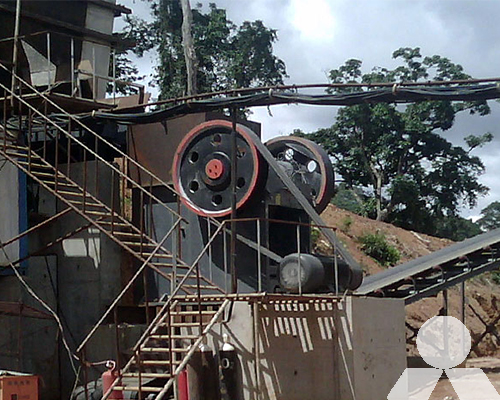Difference between gyratory crusher and jaw crusher
Crushers are essential machines in the mining and construction industries, used to break down rocks and minerals into smaller, more manageable sizes. Two common types of crushers are the gyratory crusher and the jaw crusher. While both serve the same fundamental purpose, they differ in several aspects. In this article, we will explore the distinctions between gyratory crushers and jaw crushers.

1. Working Principle:
- Gyratory Crusher: These crushers have a conical crushing head that gyrates around a fixed point, causing the crushing chamber to open and close cyclically. Material is fed into the top and crushed between the mantle and concave.
- Jaw Crusher: Jaw crushers operate by compressing materials between two jaw plates. The movable jaw moves back and forth against the fixed jaw, creating a crushing motion.
2. Crushing Capacity:
- Gyratory Crusher: Typically, gyratory crushers are designed for high-capacity operations and are suitable for large feed sizes.
- Jaw Crusher: Jaw crushers are versatile but generally have lower capacity compared to gyratory crushers, making them suitable for smaller feed sizes.
3. Size Reduction Ratio:
- Gyratory Crusher: Offers a higher reduction ratio compared to jaw crushers, resulting in finer product sizes.
- Jaw Crusher: Generally has a lower reduction ratio, producing coarser products.
4. Maintenance and Operating Costs:
- Gyratory Crusher: Typically requires more complex maintenance procedures and higher maintenance costs due to its design complexity.
- Jaw Crusher: Tends to have simpler maintenance requirements and lower operating costs.
5. Energy Efficiency:
- Gyratory Crusher: Can be less energy-efficient than jaw crushers due to the continuous crushing action and the need for a larger motor.
- Jaw Crusher: Generally considered more energy-efficient, especially for smaller operations.
6. Size and Portability:
- Gyratory Crusher: Larger and bulkier machines, typically stationary and suitable for fixed installations.
- Jaw Crusher: Smaller and more portable, making them suitable for a wider range of applications, including mobile crushing.
7. Application:
- Gyratory Crusher: Often preferred for primary crushing in large mining and industrial operations.
- Jaw Crusher: Versatile and commonly used for both primary and secondary crushing in various industries, including quarrying and construction.
8. Material Hardness:
- Gyratory Crusher: Suited for harder materials with higher compressive strength.
- Jaw Crusher: Suitable for a wider range of materials, including softer rocks and minerals.
In summary, gyratory crushers and jaw crushers have distinct differences in terms of their working principles, capacity, size reduction ratio, maintenance requirements, energy efficiency, portability, and applications. The choice between these two types of crushers depends on the specific needs and constraints of the operation. While gyratory crushers excel in high-capacity, primary crushing, jaw crushers offer versatility and cost-efficiency for a broader range of applications. Selecting the right crusher for a given task is crucial to optimizing the overall crushing process.









